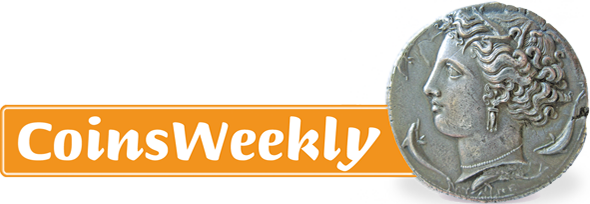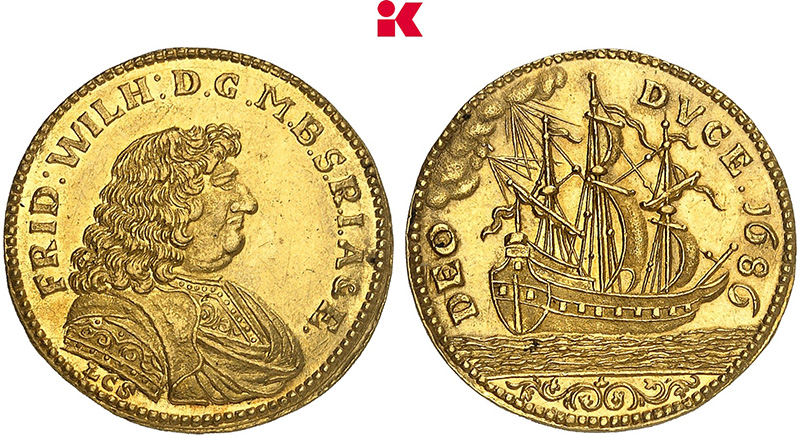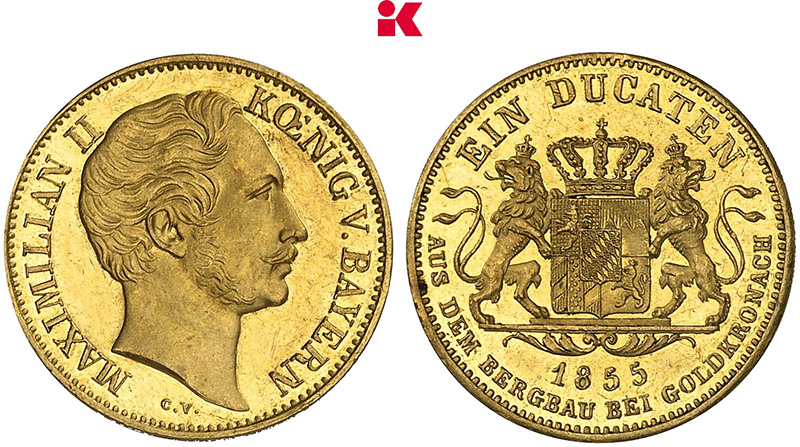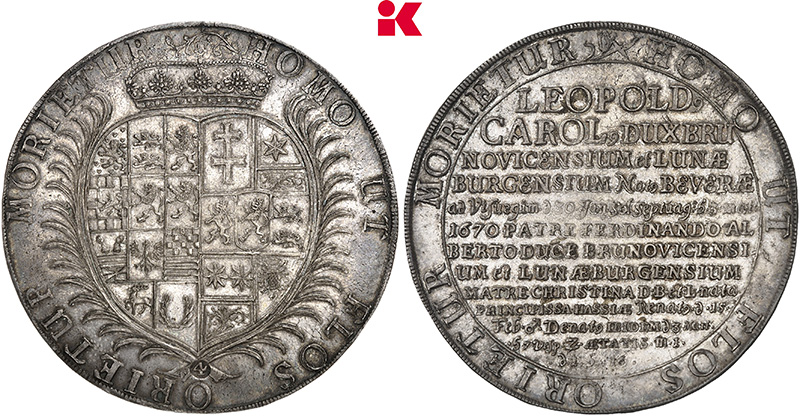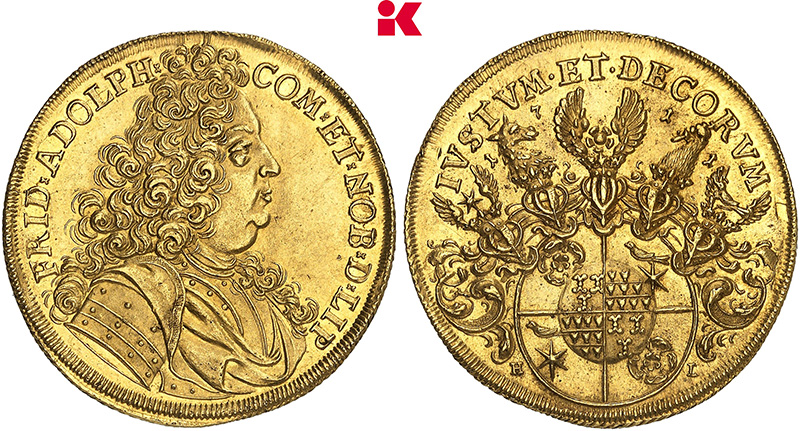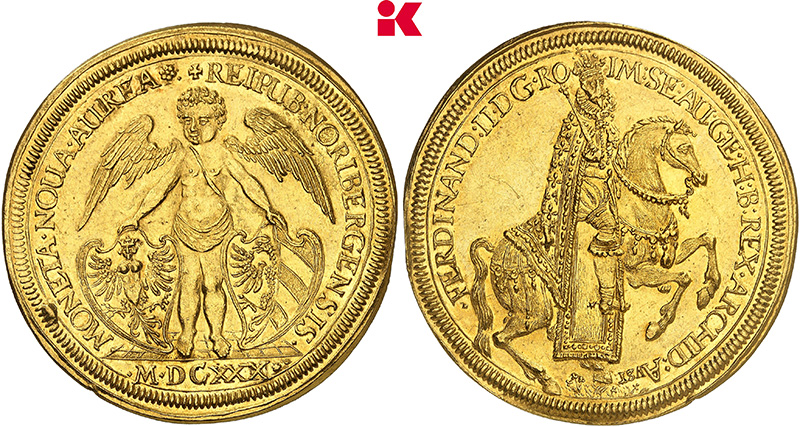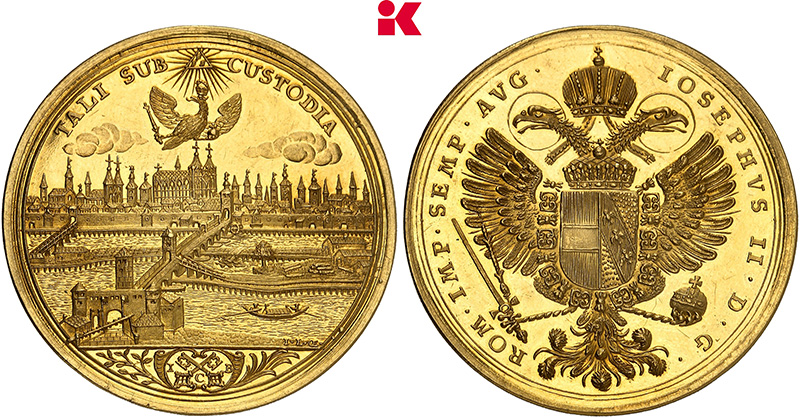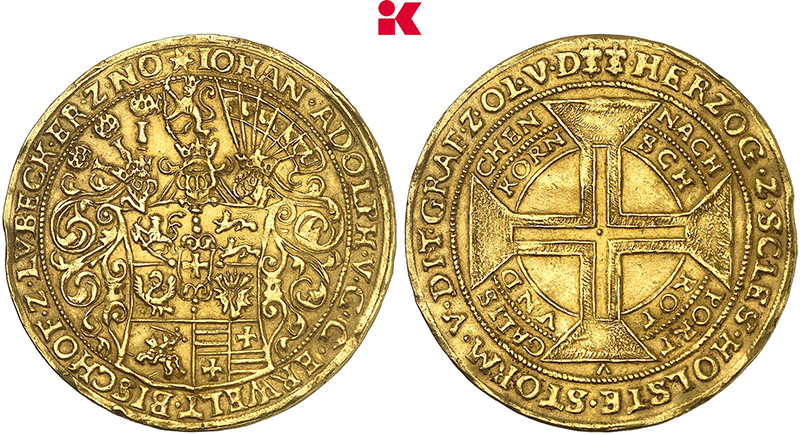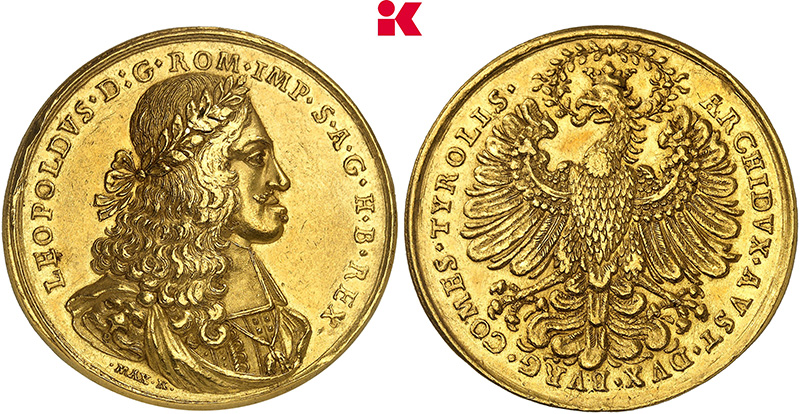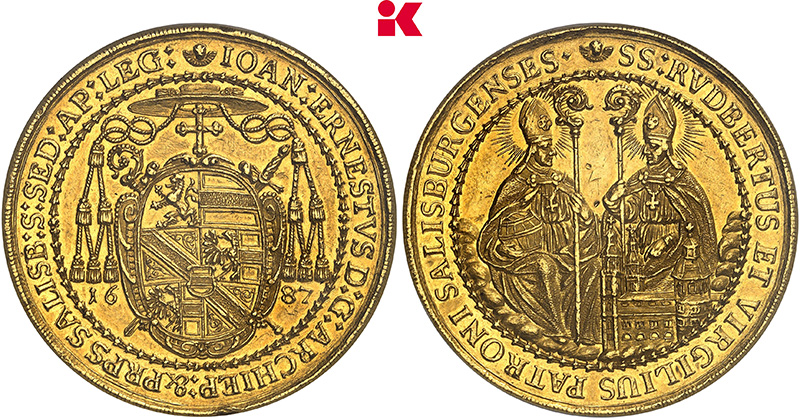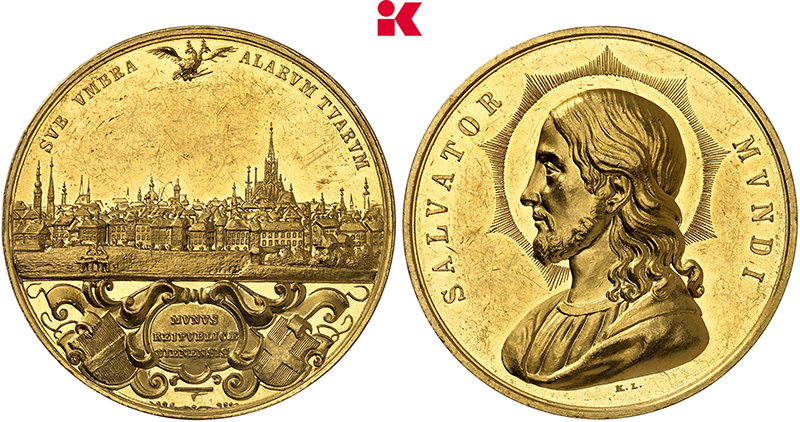Between Triumph and Tragedy – Maximilian II Emanuel, “The Prince of Bankrupts”
By Helmut Caspar
After the devastation and trauma of the Thirty Years’ War (1618–1648), Bavaria experienced a period of relative peace and reconstruction under Electors Maximilian I and Ferdinand Maria. In Munich, the royal residence was expanded into a city within the city – imperial in scale and ambition. The Theatine Church, the central wing of Nymphenburg Palace, and numerous other grand buildings sprang up, each meant to proclaim the rising power and prestige of Bavaria.
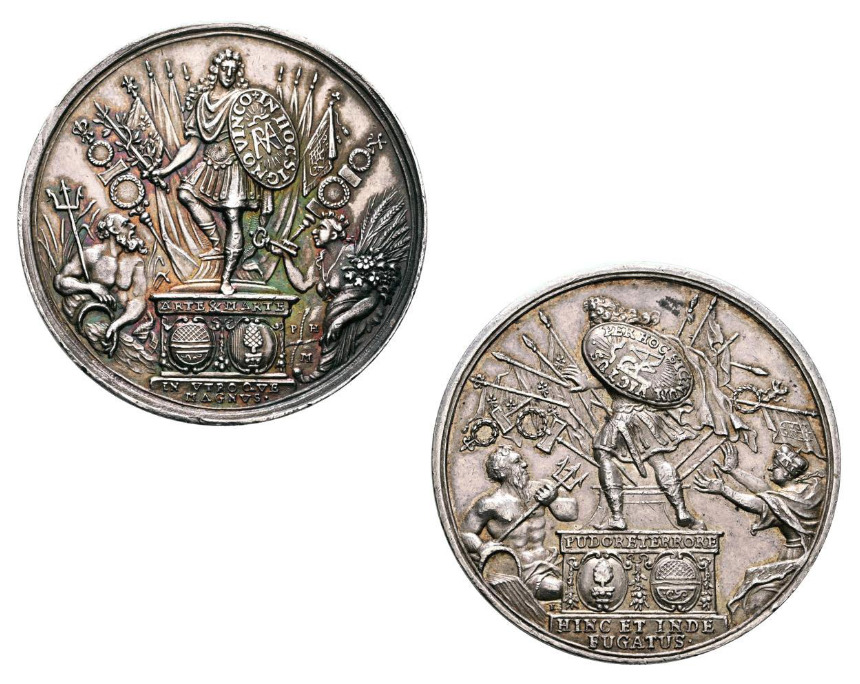
Triumph and Defeat. Left: 1703 medal by Philipp Heinrich Müller celebrating Maximilian II Emanuel’s capture of 16 cities. Silver, 41 mm, 32.97 g. Leu Auction 18, 2 June 2025, 1071. Estimate: 500 CHF. Right: 1704 satirical medal marking Maximilian II Emanuel’s defeat at Höchstädt. Silver, 43 mm, 29.46 g. Leu Auction 18, 2 June 2025, 1072. Estimate: 500 CHF.
Then came Maximilian II Emanuel – and with him, war took the place of the arts. When the Ottoman army approached Vienna in 1683, the young Bavarian elector seized the opportunity to prove himself on the battlefield. Born in 1662 and ascending to the electorship in 1679 at just 18, Maximilian made a name for himself as a gifted general, an avid builder, and a passionate collector of art. But his life was also marked by crushing personal losses – most tragically, the death of his young son, Joseph Ferdinand Leopold, in 1699. The boy had been named heir to the Spanish throne in 1698 by the physically and mentally unfit King Charles II of Spain. Had he lived, Joseph Ferdinand would have ruled a global empire, elevating the House of Wittelsbach to unprecedented heights. For Maximilian, the prospect of placing his son on the Spanish throne was nothing short of a dynastic dream.
However, when King Charles II died in 1700, the War of the Spanish Succession erupted. The Habsburg emperors – Leopold I, Joseph I, and later Charles VI – clashed with France’s Louis XIV over who would claim the Spanish crown. Louis fought for his grandson, Philip of Anjou; Leopold backed his own son, Charles. The war, which tore across Europe for over a decade, ended with the Treaties of Utrecht (1713) and Rastatt (1714). Louis XIV prevailed: his grandson became Philip V of Spain. The political scheming, the drawn-out sieges, and the shifting frontlines were commemorated in a flood of medals, brimming with baroque allegories and exaggerated hero worship.
Early in the conflict, Maximilian II Emanuel fought on the Habsburg side and helped repel the Ottoman advance on Vienna. At the Battle of Mohács in August 1687, he played a decisive role in a major imperial victory, one that prompted the Hungarian estates to accept Habsburg succession to the throne. The spoils of war were considerable – Maximilian reportedly gained two million ducats. The defeat of the Ottomans opened the door for Habsburg expansion into Hungary, Slavonia, and beyond.
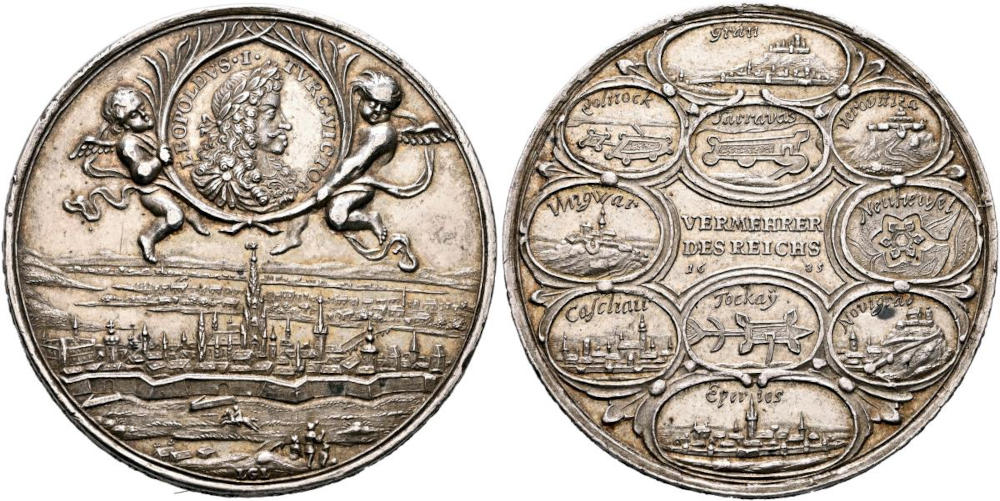
Even before Mohács, imperial forces had already retaken several Hungarian cities and fortresses. One such string of victories was commemorated in 1685 with a silver medal honoring Emperor Leopold I. Silver, 39 mm, 25.89 g. Leu Auction 18, 2 June 2025, 1027. Estimate: 350 CHF.
Maximilian’s participation in the Ottoman wars, however, was driven less by loyalty to the Habsburgs and more by a hunger for land and influence. His military prowess earned him the lucrative post of governor of the Spanish Netherlands – but he wanted more. When his son’s death in 1699 dashed any hopes of a Wittelsbach on the Spanish throne, Maximilian switched sides. He aligned himself with France – but his luck didn’t follow.
On August 13, 1704, at the Battle of Blenheim (Höchstädt), Bavarian and French forces under Marshal Tallard and Maximilian were decisively defeated by imperial troops. It was a turning point in the war – and in Maximilian’s career.
Emperor Leopold I branded Maximilian a traitor and declared him an outlaw, barring his return to Bavaria until the war ended. When he finally came home in 1715, after fourteen years in exile, he tried to restore the battered state. But true to his baroque nature, he spent lavishly – on palaces, art collections, and glittering festivities – despite the dire condition of his war-weary subjects.
One of his most extravagant projects was the transformation of the Wittelsbach estate in Schleißheim into a vast baroque palace complex. Inspired by French royal architecture, it included the Old Palace, the New Palace, and Lustheim Palace. Maximilian wanted a residence worthy of an emperor – one that would signal his ambitions for global rule. Grand though it was, the complex was hastily and carelessly constructed. By the 18th century, it already required major repairs.
When Maximilian died on February 26, 1726, he was laid to rest in the Theatine Church in Munich. But his legacy was a complicated one. Nicknamed the “Prince of Bankrupts,” he left Bavaria with a crushing debt of over 26 million gulden.
Two medals offered in Leu Auction 18 reflect both the heights and humiliations of Maximilian’s career in southern Germany. The first, commissioned in 1703, was designed by the Augsburg medallist Philipp Heinrich Müller. It shows Maximilian dressed in Roman garb, triumphant after capturing several cities. The river god Danubis (the Danube) and the personification of Ulma (Ulm) pay him homage. On the reverse, the goddess Victoria appears, surrounded by the coats of arms of the conquered towns.
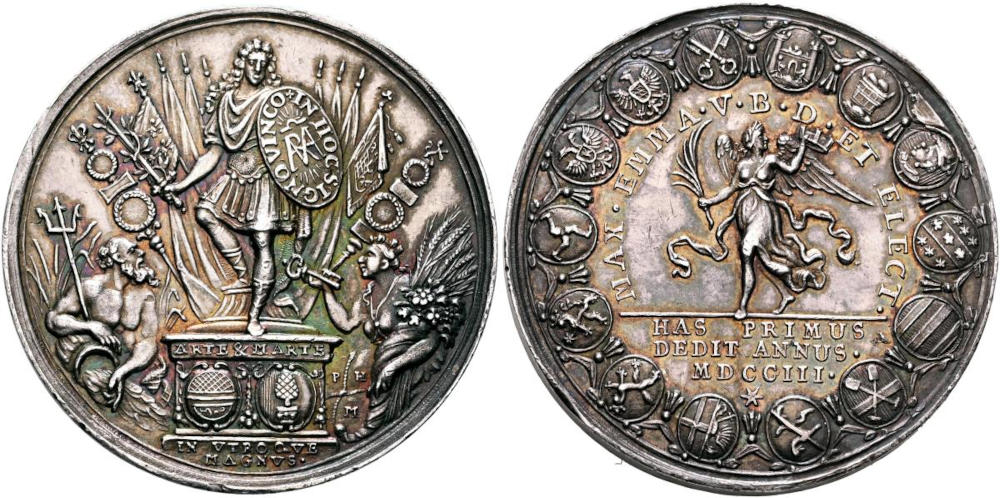
1703 medal by Philipp Heinrich Müller celebrating Maximilian II Emanuel’s capture of 16 cities. Silver, 41 mm, 32.97 g. Leu Auction 18, 2 June 2025, 1071. Estimate: 500 CHF.
But glory turned to ridicule just one year later. Following his defeat at Blenheim, an anonymous artist produced a satirical medal mocking Müller’s design. On it, Maximilian is shown fleeing from an enraged figure of Bavaria. The once-fawning river god Danubis now rages, brandishing his trident. On the reverse, the goddess of Victory is replaced by Justitia, flanked by the cities Maximilian had lost.
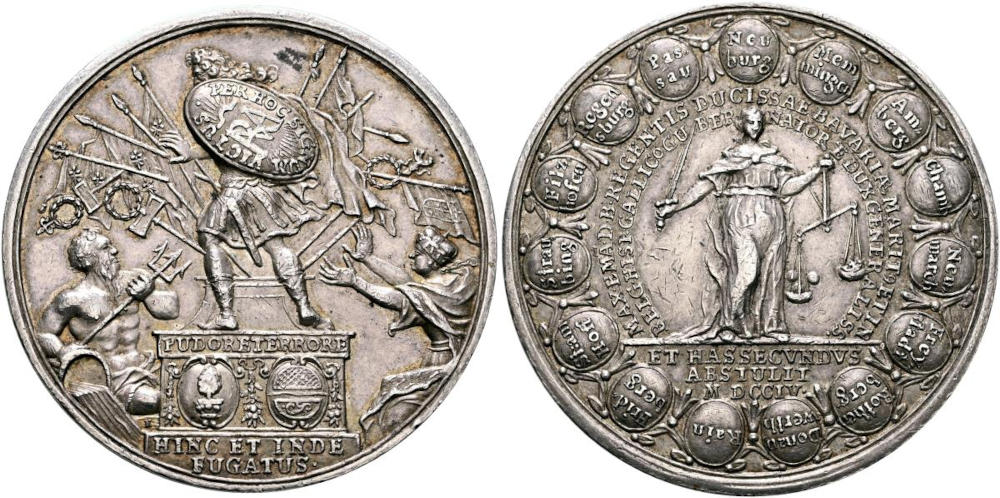
1704 satirical medal marking Maximilian II Emanuel’s defeat at Höchstädt. Silver, 43 mm, 29.46 g. Leu Auction 18, 2 June 2025, 1072. Estimate: 500 CHF.
These medals weren’t the only commentary. A satirical pamphlet titled “Der Bayrischen Medaille oder Schau-Müntze Satz und Gegensatz” (“The Bavarian Medal or Commemorative-Coin: Thesis and Antithesis” in German) circulated in 1704, illustrated with images of both the triumphal 1703 medal and its mocking successor. A rare copy survives in the Bavarian State Library.
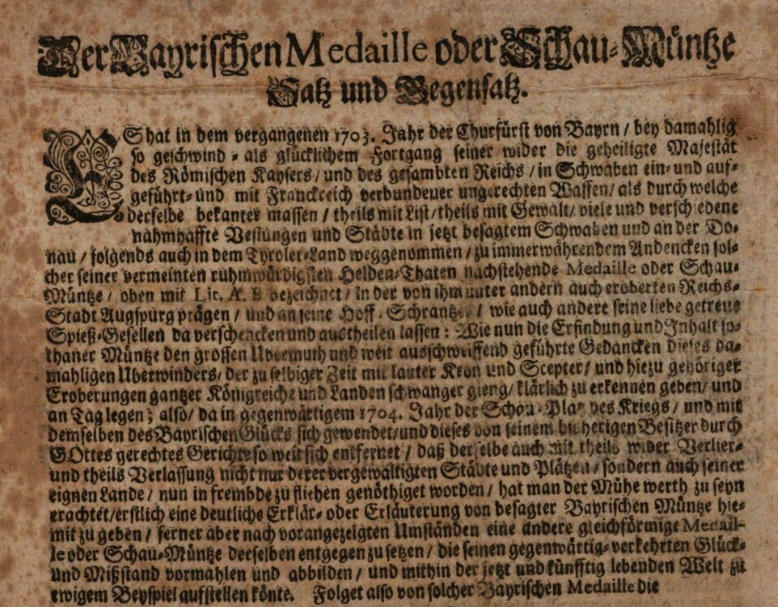
Pamphlet: “Der Bayrischen Medaille oder Schau-Müntze Satz und Gegensatz,” excerpt from p. 1, 1704. Source: Bayerische Staatsbibliothek, 2 Bavar. 1000, 23h.
The pamphlet ends with a poem that drives home the satirical tone:
‘What endures forever is cast in metal,
So future generations may behold the past.
Here perjury brands itself in ore—
So its likeness endures into the ages.
Two years ago, madness led him to battle,
Enslaving cities with iron and flame.
But soon his fury swept through half of Swabia,
Treason wounding the Empire all the same…
The Bavarian prince now flees—leaving towns behind,
Towns he once claimed by brutal force.
He lost the Palatinate and the power of his title,
Leaving Bavaria’s rule in a woman’s hand.
And this is the medal he once proudly struck—
A token of his fall, now mocked in our land.
He fled to Brussels, this coin in hand,
While we mint anew the coin of liberty—
And thus we say, with good reason and faith:
God bless Leopold and his loyal band.’
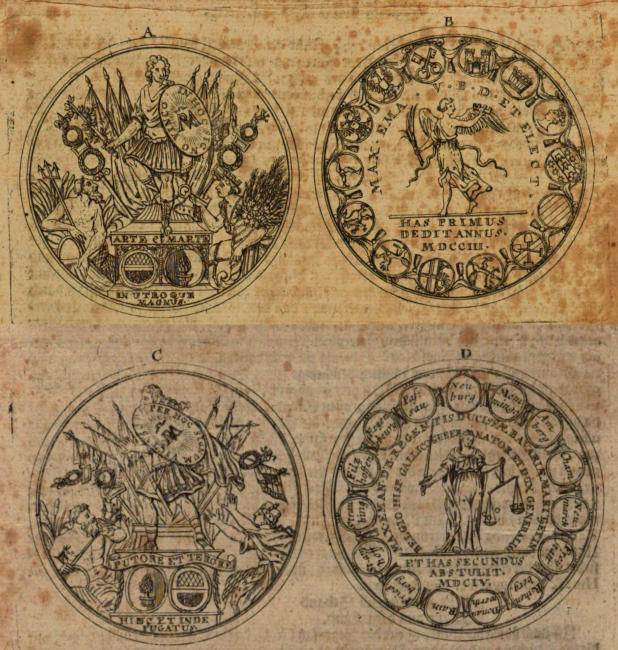
Pamphlet: “Der Bayrischen Medaille oder Schau-Müntze Satz und Gegensatz,” excerpt from p. 2f. 1704. Source: Bayerische Staatsbibliothek, 2 Bavar. 1000, 23h.
So what remains of Maximilian II Emanuel? Lavish palaces. Beautiful medals. And a legacy that tells both of a man’s lofty self-image – and his downfall.






